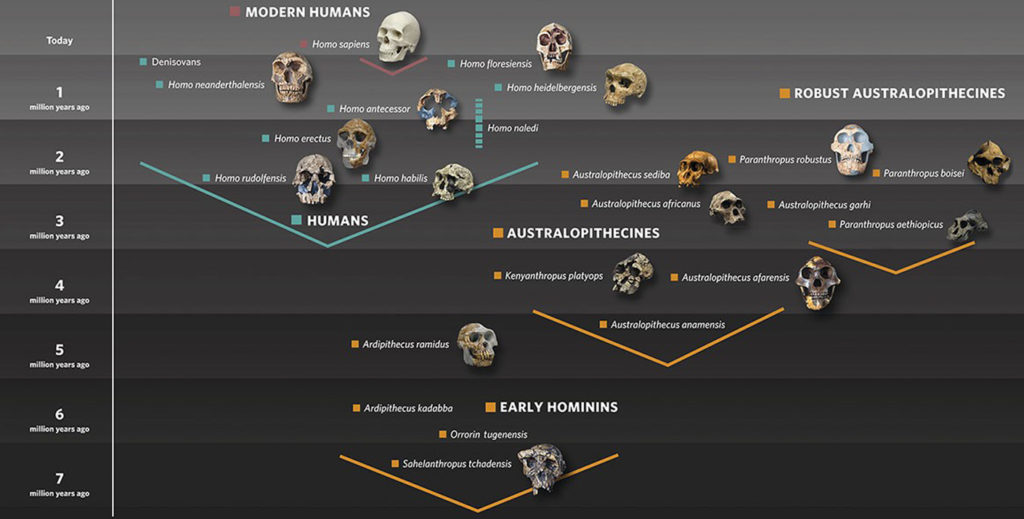Physical Address
304 North Cardinal St.
Dorchester Center, MA 02124
Physical Address
304 North Cardinal St.
Dorchester Center, MA 02124
Being human in this 'brave new world'
Being human in this 'brave new world'

ANCIENT footprints discovered in Tanzania were made by a mysterious hominin who walked with an unusual “cross-stepping” gait, further tangling the already complex story of human evolution, a new report has suggested.
In his report, Dr McNutt writes: “Bipedal trackways discovered in 1978 at Laetoli site G, Tanzania and dated to 3.66 million years ago are widely accepted as the oldest unequivocal evidence of obligate bipedalism in the human lineage.”
These prints believed to have been made by Australopithecus afarensis – the same species as the famous ‘Lucy’ skeleton found in 1974 and named after The Beatles song Lucy in the Sky With Diamonds.
Another trackway discovered two years earlier at nearby site A was partially excavated and also attributed to a hominin, but curious affinities with bears (ursids) marginalised its importance to the paleoanthropological community.
Consequently, the location of these footprints fell into obscurity, Dr McNutt explained.
However, he added: “In 2019, we located, excavated and cleaned the site A trackway, producing a digital archive using 3D photogrammetry and laser scanning.

“Here we compare the footprints at this site with those of American black bears, chimpanzees and humans, and we show that they resemble those of hominins more than ursids.
“In fact, the narrow step width corroborates the original interpretation of a small, cross-stepping bipedal hominin.”
Dr McNutt added: “However, the inferred foot proportions, gait parameters and 3D morphologies of footprints at site A are readily distinguished from those at site G, indicating that a minimum of two hominin taxa with different feet and gaits coexisted at Laetoli.
“Some thought they were made by a bear walking on hind legs; others that they were left by a different kind of hominin.”
Nature
He concludes: “We found that normal and cross-stepping human footprints differ minimally and do not match in magnitude or direction the differences between the site G and S prints and the site A prints
“We therefore conclude that the site A footprints were made by a bipedal hominin with a distinct and presumably more primitive foot than A. afarensis.
“The gross shape of the foot is chimpanzee-like, with slight hallucial divergence and perhaps some midfoot mobility.
“However, the site A individual was walking bipedally with a narrow step width indicative of either a valgus knee, adducted hips, or both.
“This combination of foot morphology and gait kinematics inferred from the preserved footprints precludes them from having been made by A. afarensis.
“These findings are part of a growing body of evidence that hints at an under-appreciated diversity of hominins from this time period.”
Human beings split from their closest living relative, the chimpanzee, roughly seven million years ago.
Fossil evidence is scarce, but early ancestors are likely to include Sahelanthropus tchadensis, which existed between six and seven million years ago in Chad and which has small canine teeth, and Orrorin tugenensis, which lived roughly six million years ago, and which exhibited primitive bipedalism.
By two million years ago, evolutionary scientists believe several species of australopithecine had spread across much of southern and eastern Africa.
At some stage, one of them gave rise to the next phase, the genus Homo.
Nor does the picture become any less complicated at this point – the Human Evolution Gallery at London’s Natural History Museum details no fewer than eight species of human being other than homo sapiens, or modern man.
These are: Homo habilis, Homo rudolfensis, Homo erectus, Homo antecessor, Homo heidelbergensis, Homo floresiensis (sometimes dubbed ‘the Hobbit’), Homo neanderthalensis (the Neanderthals) and the recently discovered Homo naledi.